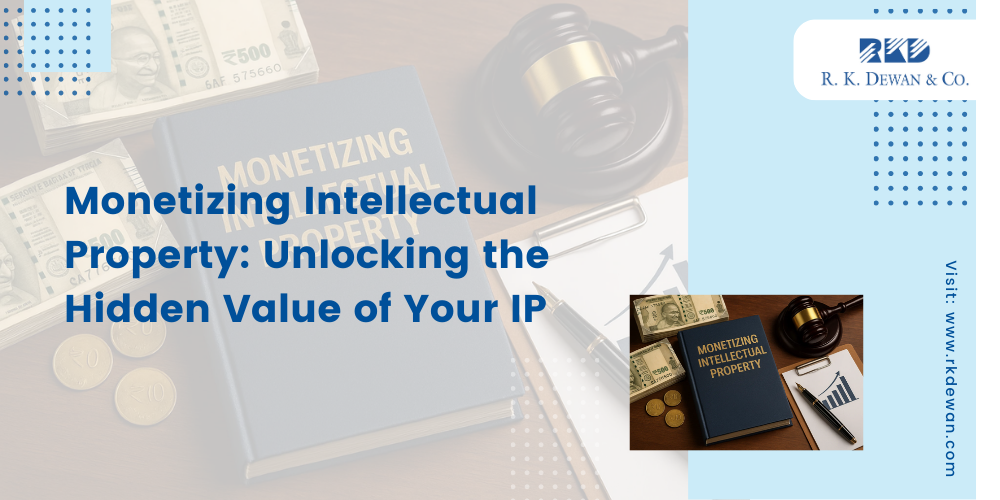Introduction
In today’s innovation-driven economy, intellectual property (IP)—patents, trademarks, copyrights, and trade secrets—has emerged as a critical asset class. Beyond legal protection, IP represents a significant revenue stream for businesses, startups, and research institutions. However, many organizations fail to capitalize on their IP’s full potential, leaving millions in unrealized value.
This comprehensive guide explores how to monetize IP effectively, covering valuation methods, licensing strategies, and alternative commercialization approaches. By understanding these principles, businesses can transform intangible assets into sustainable revenue streams, competitive advantages, and investment opportunities.
Unlocking the Hidden Value of Your IP
IP monetization is the process of generating revenue from intellectual assets. Whether through licensing, sales, or strategic partnerships, monetizing IP requires a structured approach:
- Identifying Valuable IP – Not all patents or trademarks are equally valuable. Focus on assets with market demand, strong legal protection, and commercial applicability.
- Valuation – Accurately assessing IP worth ensures fair pricing in licensing or sales.
- Choosing the Right Monetization Model – Licensing, franchising, or outright sales, depending on business goals.
- Protection & Enforcement – Ensuring IP rights are secure and infringements are minimized.
Companies like IBM, Qualcomm, and Disney have built billion-dollar revenue streams from IP monetization. This guide breaks down the key steps to replicate their success.
Step 1: Understanding the Value of Your IP
Before monetizing, businesses must evaluate their IP’s worth. Three primary valuation methods are used:
1. Income Approach
- Estimates future revenue generated by the IP (e.g., projected licensing royalties).
- Uses discounted cash flow (DCF) analysis to determine present value.
- Best for: Patents with clear commercialization paths (e.g., pharmaceutical drugs).
- Example: A biotech startup projected $10M in licensing revenue over 10 years, valuing its patent at $6M after discounting.
2. Market Approach
- Compares the IP to similar assets sold or licensed in the market.
- Relies on industry benchmarks (e.g., royalty rates in tech vs. manufacturing).
- Best for: Trademarks or patents with comparable transactions.
- Example: A software company licensed its AI algorithm at 7% royalties, matching industry standards.
3. Cost Approach
- Calculates the cost to recreate the IP (R&D, legal fees, filing costs).
- Useful for early-stage innovations without revenue history.
- Best for: Trade secrets or proprietary manufacturing processes.
- Example: A semiconductor firm valued its chip design at $2M based on R&D investment.
Key Considerations in IP Valuation:
✔ Market Demand – Is there a commercial need for the IP?
✔ Legal Strength – How enforceable is the patent or trademark?
✔ Competitive Edge – Does the IP offer unique advantages?
Step 2: IP Licensing – The Safest Monetization Path
Licensing allows IP owners to earn royalties while retaining ownership. It is ideal for companies lacking production or marketing resources.
Types of Licensing Agreements
| Type | Best For | Pros & Cons |
|---|---|---|
| Exclusive | High-value patents | Higher royalties but limits licensor’s use |
| Non-Exclusive | Multiple industries | Wider reach but lower per-license revenue |
| Sole License | Strategic partners | Licensor + one licensee can use IP |
| Cross-Licensing | Tech companies | Swap patents to avoid litigation |
Royalty Models
- Percentage of Sales (5-15%) – Common in tech and consumer goods.
- Per-Unit Royalty ($X per product sold) – Used in manufacturing.
- Lump-Sum + Royalties – Upfront payment with ongoing fees.
- Minimum Guarantees – Ensures baseline income regardless of sales.
Case Study: IBM earns $1B+ annually from patent licensing, demonstrating the power of structured royalty models.
Step 3: Alternative Monetization Strategies
Beyond licensing, businesses can explore:
1. Selling IP Outright
- Best for: Companies needing liquidity or exiting a market.
- Example: Nortel sold its 6,000-patent portfolio for $4.5B in 2011.
2. Franchising (For Trademarks)
- Best for: Established brands (e.g., McDonald’s, 7-Eleven).
- Revenue Model: Franchise fees (4-8% of sales).
3. IP-Backed Financing
- Use patents as collateral for loans.
- Example: Tesla leveraged its patents to secure early-stage funding.
4. Litigation (Last Resort)
- Sue infringers for damages or forced licensing.
- Example: Qualcomm earned billions from patent infringement cases.
Step 4: Build Your Monetization Strategy
A structured approach maximizes returns:
- Audit Your IP Portfolio – Identify assets with monetization potential.
- Choose a Model – Licensing, sales, or hybrid based on business goals.
- Protect Globally – File patents/trademarks in key markets (US, EU, China).
- Negotiate Smart Deals – Work with IP attorneys to avoid undervaluation.
- Monitor & Optimize – Track royalties and adapt to market changes.
Conclusion & Key Takeaways
Intellectual property is a sleeping giant in many companies’ balance sheets. By leveraging proper valuation, licensing, and alternative strategies, businesses can unlock significant revenue.
Key Takeaways:
✔ Value Before Monetizing – Use income, market, or cost approaches.
✔ Licensing is the Safest Model – Offers recurring revenue without losing ownership.
✔ Explore Alternatives – Sales, franchising, or IP-backed financing.
✔ Protect & Enforce – Ensure IP rights are secure in all markets.
Next Steps:
- Conduct an IP audit to identify high-value assets.
- Consult an IP law firm for valuation and licensing support.
- Implement a long-term monetization strategy aligned with business goals.
For expert guidance, firms like R K Dewan & Co. offer end-to-end IP monetization services, from valuation to global licensing.


